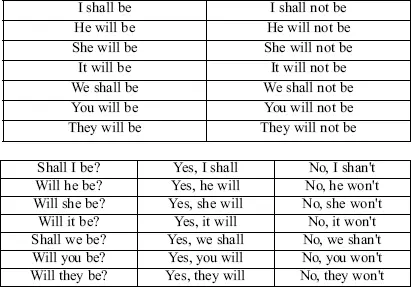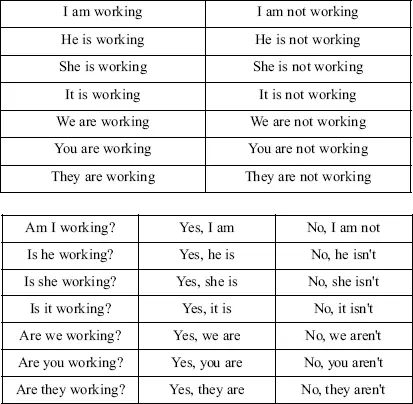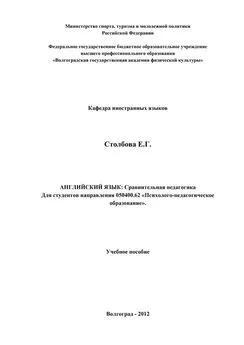Елена Беликова - Английский язык для медиков: конспект лекций
- Название:Английский язык для медиков: конспект лекций
- Автор:
- Жанр:
- Издательство:Конспекты, шпаргалки, учебники «ЭКСМО»b4455b31-6e46-102c-b0cc-edc40df1930e
- Год:2007
- Город:Москва
- ISBN:978-5-699-20181-5
- Рейтинг:
- Избранное:Добавить в избранное
-
Отзывы:
-
Ваша оценка:
Елена Беликова - Английский язык для медиков: конспект лекций краткое содержание
Представленный вашему вниманию конспект лекций предназначен для подготовки студентов медицинских вузов к сдаче экзамена. Книга включает в себя полный курс лекций по английскому языку, написана доступным языком и будет незаменимым помощником для тех, кто желает быстро подготовиться к экзамену и успешно его сдать.
Английский язык для медиков: конспект лекций - читать онлайн бесплатно ознакомительный отрывок
Интервал:
Закладка:
The hard palate has an intermediate layer of bone, supplied anteriorly by paired palatine processes of the maxillary bones, and posteriorly by the horizontal part of each palate bone. The oral surface of the hard palate is a mucous membrane covered with a stratified squamous epithelium. Anteriorly in humans there are four to six transverse palatine ridges: these diminish in prominence between fetal life and old age. A submucosal layer contains mucous glands and binds the membrane firmly to the periosteum of the bony component. Above the bone is the mucous membrane that forms the floor of the nasal cavity.
The soft palate is a backward continuation from the hard palate. Its free margin connects on each side with two folds of mucous membrane, the palatine arches, enclosing a palatine tonsil. In the midline the margin extends into a fingerlike projection called uvula. Both the hard and soft palate bear a seam, or raphe, along the midline. The oral side of the soft palate continues as the covering of the hard palate, and the submucosa contains mucous glands. The intermediate layer is a sheet of voluntary muscle.
Besides separating the nasal passages from the mouth, the hard palate is a firm plate, against which the tongue manipulates food. In swallowing and vomiting the soft palate is raised to separate the oral from the nasal portion of the pharynx. This closure prevents food from passing upward into the nasopharynx and nose. The closing action also occurs in speech.
New words
oral cavity – полость рта
forms – формы
embryo – эмбрион
in-pocketing – в присваивании
functionally – функционально
mouth – рот
special – особенный
structures – структуры
associated – связанный
humans – люди
margins – края
lips – губы
mark – марка
junction – соединение
hard – трудно
merges – слияния
distensible – растяжимый
cheeks – щеки
principally – преимущественно
tongue – язык
taste – вкус
to assists – помогать
chewing – жевание
swallowing – глотание
speaking – разговор
limit – предел
Спряжение глагола to be (быть) в Future Simple Tense
(Future Indefinite Tense) Таблица 7

Вставьте глагол to be в Present, Past или Future Simple.
1. My father… a teacher.
2. He… a pupil twenty years ago.
3. I… a doctor when I grow up.
4. My sister… not… at home tomorrow.
5. She… at school tomorrow.
6… you… at home tomorrow?
7… your father at work yesterday?
8. My sister… ill last week.
9. She… not ill now.
10. Yesterday we… at the theatre.
11. Where… your mother now? – She… in the kitchen.
12. Where… you yesterday? – I… at the cinema.
13. When I come home tomorrow, all my family… at home.
14… your little sister in bed now? – Yes, she…
15… you little… at school tomorrow? – Yes I…
16. When my granny… young, she… an actress.
17. My friend… in Moscow now.
18. He… in St. Petersburg tomorrow.
19. Where… your books now?
20. They… in my bag.
Answer the questions.
1. What the oral cavity forms?
2. What is lined by ectoderm?
3. Does mouth form the first portion of both the digestive and respiratory systems?
4. What does the roof of the mouth consist of?
5. What is situated behind hard palate?
6. What do the lateral walls consist of?
7. What is the floor of the mouth formed principally by?
8. What does the palate develop?
9. What is the intermediate layer?
10. In what cases is the soft palate raised to separate the oral from the nasal portion of the pharynx?
Make the sentences of your own using the new words (10 sentences).
Find the verb to be in the text. Explain why it is used in such a way?
ЛЕКЦИЯ № 37. Oral glands
All mammals are well supplied with oral glands. There are numerous small glands, such as the labial glands of the lips, buccal glands of the cheeks, lingual glands of the tongue, and palatine glands of the palate. Besides these, there are larger paired sets in mammals that are quite constant from species to species and are commonly designated as salivary glands. The parotid gland, near each ear, discharges into the vestibule. The submaxillary or submandibular gland lies along the posterior part of the lower jaw; its duct opens well forward under the tongue. The sublingual gland lies in the floor of the mouth. It is really a group of glands, each with its duct. Saliva is a viscid fluid containing a mixture of all the oral secretions. It contains mucus, proteins, salts, and the enzymes ptyalin and maltase. Most of the ptyalin in human saliva is furnished by the parotid gland. The digestive action of saliva is limited to starchy food. Other uses of saliva include the moistening of food for easier manipulation by the tongue, the consequent facilitation of swallowing, and a lubrication by mucus that ensures a smoother passage of food down the esophagus to the stomach. The daily amount of saliva produced by an adult is about 1,5 quarts. Tonsils are spongy lymphoid tissues at the back of the throat, composed mainly of lymphocytic cells held together by fibrous connective tissue. There are three types of tonsils. The palatine tonsils, usually referred to as «the tonsils», are visible between the arches that extend from the uvula to the floor of the mouth. The pharyngeal tonsils, usually referred to as the adenoids, lie at the back of the throat. The lingual tonsils are on the upper surface of each side of the back of the tongue. The tonsils function to protect the pharynx and the remainder of the body from infectious organisms that become trapped in the mucous membrane lining the mouth, nose and throat. Chronic or acute inflammation of the tonsils, called the tonsillitis, may serve as a source of infection elsewhere in the body.
Tongue
The tongue, a muscular organ in the mouth, provides the sense of taste and assists in chewing, swallowing, and speaking. It is firmly anchored by connective tissues to the front and side walls of the pharynx, or throat, and to the hyoid bone in the neck.
The mammalian tongue is divided into two parts by a V-shaped groove, the terminal sulcus. At the apex of this V is a small blind pit, the foramen cecum. The larger part, or body, of the tongue belongs to the floor of the mouth, whereas the root forms the front wall of the oral pharynx. The body of the tongue is separated from the teeth and gums by a deep groove. A midline fold, the frenulum, is near he tip on the undersurface. The upper surface of the body, called the dorsum, has a velvety appearance because of filiform papillae. Distributed among these are occasional larger, rounded fungiform papillae and some large conical papillae. Immediately in front of the groove separating the body of the tongue from the root is a series of still larger vallate papillae arranged in a V-shaped row. The apex of the V points down the throat. Posteriorly along each side of the body of the tongue and near the root, is a series of parallel folds constituting the foliate papillae. The surface of the root of the tongue, which belongs to the pharynx, has no papillae but bears nodules containing lymphoid tissue.
New words
mammals – млекопитающие
supplied – поставляемый
glands – железы
numerous – многочисленный
labial – губной
buccal – относящийся ко рту или щеке
lingual – языковой
palatine – небный
paired sets – соединенные ячейки
designated – определяемый
salivary glands – слюнные железы
parotid – околоушная железа
gland – железа
discharges – увольнения
vestibule – преддверие
submaxillary – верхнечелюстной
submandibular – нижнечелюстный
lie – ложь
along – вперед
sublingual – подязыковой
Present Continuous Tense (действие происходит в процессе, совершается в тот момент, когда о нем говорят) = (now, at the moment)
Спряжение глагола to work в Present Continuous Tense Таблица 8

Раскройте скобки, употребляя глаголы в Present Continuous.
(NOW)
1. The boys (to run) about in the garden.
2. I (to do) my homework.
3. John and his friends (to go) to the library.
4. Ann (to sit) at her desk. She (to study) geography.
5. A young man (to stand) at the window. He (to smoke) a cigarette.
6. The old man (to walk) about the room,
7. The dog (to lie) on the floor.
8. You (to have) a break?
9. What language you (to study)?
10. Who (to lie) on the sofa?
Переведити на английский язык.
1. Я читаю.
2. Он не пишет.
3. Мы не работаем.
4. Вы читаете?
5. Он спит?
6. Коля и Миша играют в футбол.
7. Катя играет на рояле.
8. Она не поет.
9. Моя сестра спит.
10. Папа пьет чай?
Answer the questions.
1. Are all mammals well supplied with oral glands?
2. Enumerate small glands?
3. Where are the parotid gland situated?
4. Where is submaxillary located?
5. What is saliva?
6. What limits the digestive action of saliva?
7. How much is the daily amount of saliva?
8. How is the mammalian tongue divided?
9. What provides the sense of taste?
10. From what the body of the tongue is separated?
Make the sentences of your own using the new words (10 sentences). Find the verb to be in the text. Explain why it is used in such a way?
ЛЕКЦИЯ № 38. The digestive tract structure
The gastrointestinal tract and associated organs are collectively called the digestive system. This system is responsible for receiving food and breaking it down by using enzymes from the glands and by the movement of the various parts of the intestinal tract; for absorption of these components into the blood; and for eliminating undigested food and certain metabolic wastes from the body. The alimentary canal extends from the mouth to the anus. It is a long tube varying in size and shape depending on what function the particular part performs. The tract has a very good blood sup ply, because food, once it is broken down, has to be absorbed into the bloodstream. The mouth contains the tongue and the teeth and communicates with the salivary glands situated round it. Behind the nose and mouth is the pharynx. Leading from the pharynx is a mus cular tube called the esophagus which passes down the thoracic cavity to the stomach. The stomach lies below the diaphragm in the upper left side, of the abdominal cavity. The opening into the small intestine is called the pylorus and is closed by the pyloric sphincter. The small intestine is a muscular tube coiled up in the abdominal ca vity. It is divided into three parts; the duodenum, the jejunum, and the ilium. The large intestine, also a muscular tube but with wider lumen than the small intestine, is often called the colon. It is divided into several different parts: the, cecum, the ascending colon, the transverse colon, the descending colon, the rectum and the anal canal. The glands belonging to the digestive system are the salivary glands, the liver and the pancreas.
Читать дальшеИнтервал:
Закладка:










